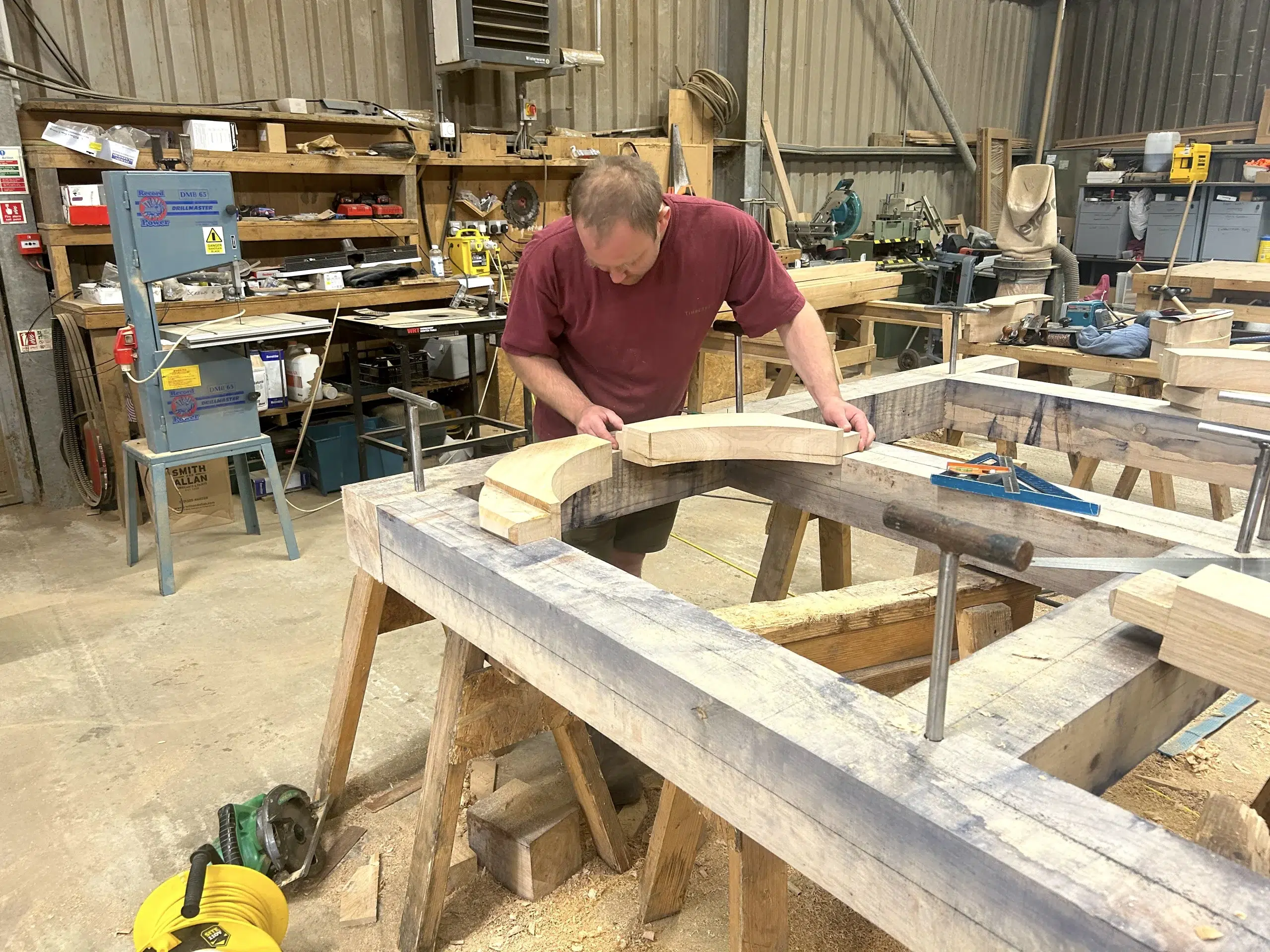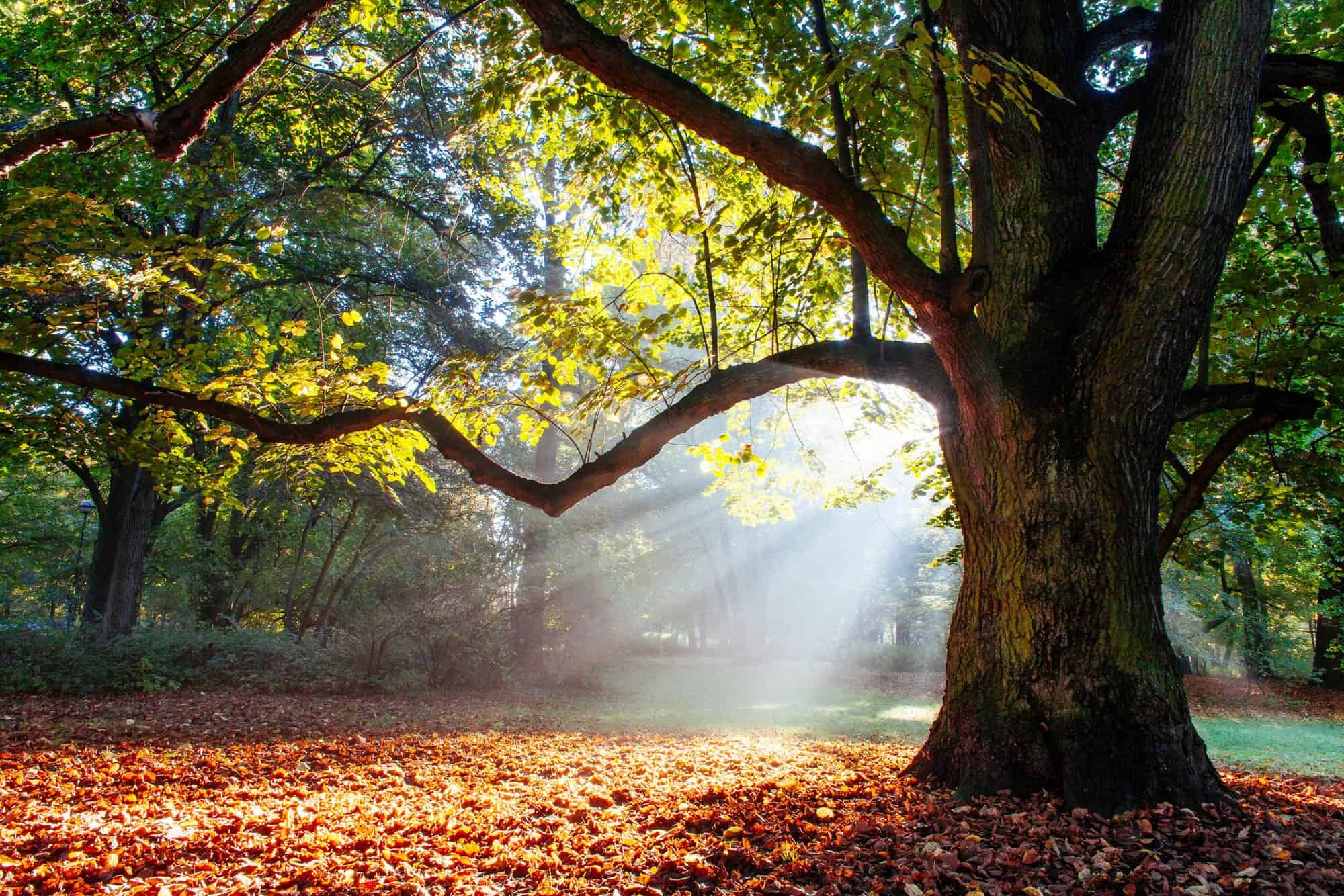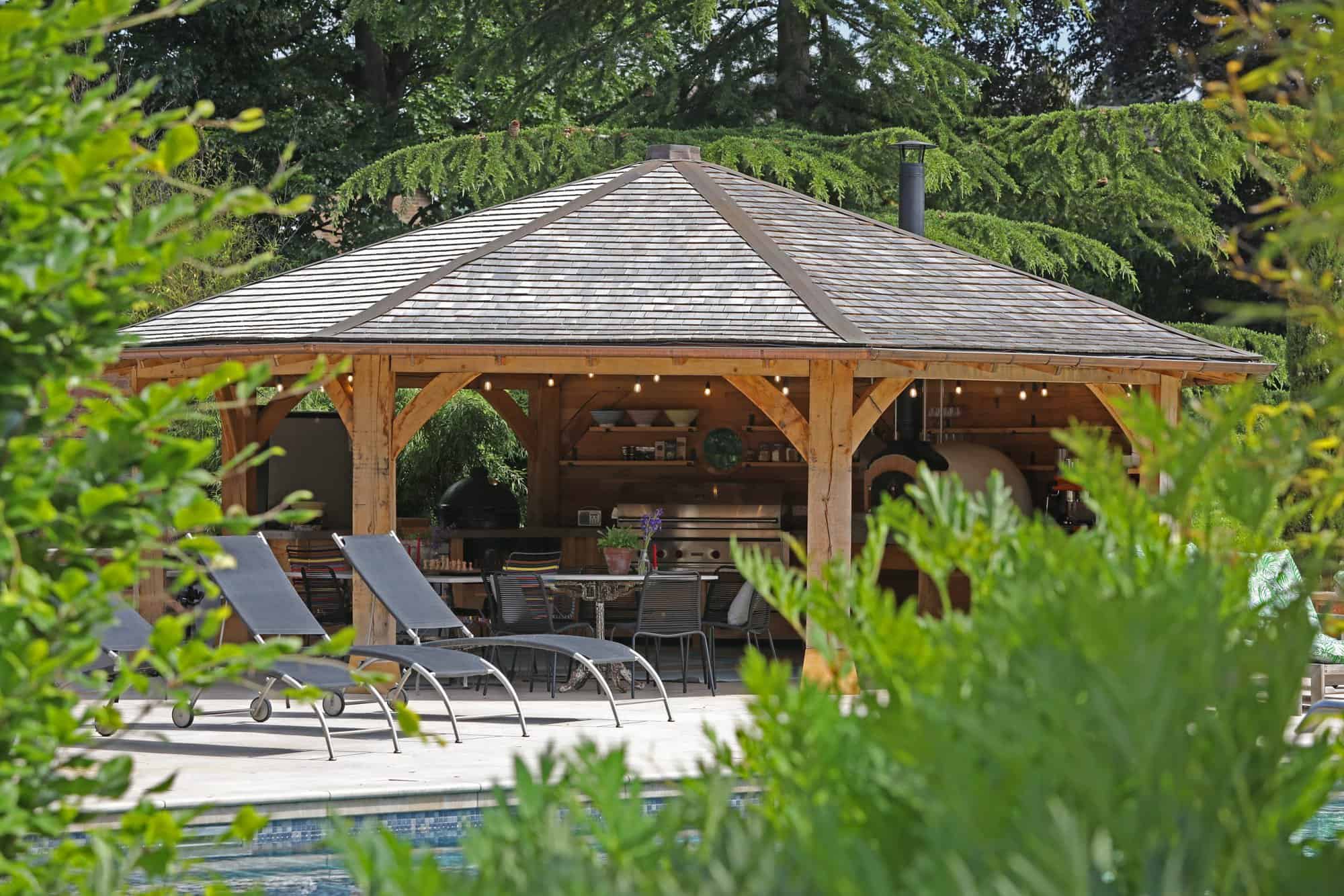The use of oak in the construction of different structures is a practice that goes back hundreds of years. Think about all the beautiful churches and old-fashioned barns still in existence. They will all have this magnificent timber as part of their building’s fabric in some way, shape, or form and it’s a testament to oak’s staying power that they’re all still around.
Oak is such a versatile material – it can also be used for window frames in place of masonry or stone providing a sound, thermally efficient, and moisture-proof structure.
However, it’s important to note that there are four visual grades that can be given to structural Oak.
TH1 and Th2 are the higher and lower grades for smaller section beams, whilst THa and THb are higher and lower grades for larger sections.
Each of these visual grades has a structural grade associated. THa and TH1 are D40, whilst THb and TH2 are D30.
Oak cannot be graded above D40 regardless of the quality, and whilst D24 has recently become accepted in the UK, we prefer to treat everything below D30 as a grade fail.
There are some timber species which are allowed to use grades of D70, but they are not as beautiful or durable as Oak.
Here, we’ll discuss D40 oak.
What is D40 Oak?

How do we define what D40 oak is? All structural oak beams are graded by visual inspection. This inspection considers the following factors:
- slope of grain
- size of knots
- splits / fissures
- wane
- distortion
- biological damage
- Smaller oak beams are graded to TH1 and TH2, whilst larger oak beams are graded to THa and THb.Whilst D30 grades are applied to the visual grades of THb and TH2, D40 is the structural grade attached to the visual grades of THa and TH1 beams.D40 timber has the highest grade that can be applied to European Oak. There are individual pieces of oak that could, in theory, achieve a much higher grade but D40 is the highest strength grade that can be applied to oak in the UK.
Grades of Structural Oak
Strictly speaking, any structural timber used in construction must be specified to a section size and grade. A UKCA Declaration of Performance must also be supplied to demonstrate that this grade has been used. These declarations are required to gain building regulations approval.
How does this relate to structural oak posts? Well, D30 and D40 both do similar jobs, however, a D40 beam could be used in a smaller section size to carry the same load as a D30. Whilst this might sound attractive, the smaller section is more likely to warp as it dries, so saving money buying smaller sections may cost more!
Let’s take a look at D30 and D40 beams and their grading:
THa D40 beams:have a cross-section of over 20000mm2 and a maximum knot size of 20% of the face. They have a slope of grain no greater than 1:12.
TH1 D40 beams: have a cross-section under 20000mm2 and a maximum knot size of 25% of the face. They have a slope of grain no greater than 1:10.THb D30 beams: they’re over 20000mm2, knots up to 75% of the face, and a maximum slope of grain 1:4.
TH2 D30 beams: they’re under 20000mm2, knots up to 75% of the face, and a maximum slope of grain 1:4.It is worth remembering that trees have branches, so there will be a limit to how long a beam can be before more knots appear. Cutting a 4m long D40 beam is relatively easy, but cutting a 7m long D40 beam will be very difficult as the top of the 7m length will be in the canopy of the tree and will inevitably be D30.
Benefits of Structural Oak

Oak is one of the best building materials on the planet. Oak is one of the best building materials. Just look at iconic structures like Windsor Castle and Canterbury Cathedral, where oak played a crucial role in their construction and longevity. It was used in internal framing, beams, and roof structures, adding resilience and strength to these historic buildings. Centuries later, they still stand strong, thanks in part to the durability of oak. Such beautiful structures continue to be repurposed and maintained for future generations to cherish and enjoy.
Oak is not just strong; it’s inherently durable, making it perfect for structural use. Its high load-bearing capacity allows for creating solid frameworks without needing to overbuild. Naturally resistant to decay and pests, oak doesn’t rely on chemical treatments, which adds to its appeal for those wanting a more environmentally friendly option. Its insulating properties help keep indoor spaces comfortable, aiding in temperature regulation and contributing to energy efficiency. Over time, oak matures beautifully, developing a rich patina that enhances the character and visual appeal of any structure.
Not many people expect steel and concrete structures to last as long!
Applications of D40 Oak in Construction
What uses does D40 oak have in construction? Typically, it’s used for structures such as oak framed extensions, and it’s used to make structural beams and oak trusses, too.
Why choose D40? Well, whenever an oak beam must carry a larger load, D40 oak will allow you to use the smallest possible section size to do the job.
Structural engineers will often specify the use of quite small beams in D40, as the calculation tells them this is all that is needed. An oak framer must then consider how much ‘meat’ he has in the beam to cut joints, so often here at Timberpride, we’ll specify a slightly larger section to accommodate these.
Common Questions about D40 Oak
Let’s now take some time out to ask a few common questions about D40 oak.
- How does D40 oak compare to other types of structural oak?
It’s the highest grade of oak available. The only other structural grades that apply to oak are D30 and D24. Timberpride chooses not to use D24 and sticks to D30, as we don’t import beams and prefer the quality standards it maintains. - What are the maintenance requirements for D40 oak?
One of the great things about oak is how little maintenance it requires to keep it looking beautiful. It can be left untreated, allowing the beauty of the grain to shine through, or given a quick sand down and then varnished, oiled, or waxed — whichever you prefer. - Is D40 oak suitable for all types of buildings?
Yes, it’s one of the most popular forms of oak and is widely used in many different methods of construction. -
Timberpride’s Expertise with D40 Oak

An incredible Octagonal Oak Framed Garden Kitchen created by Timberpride. With over thirty years of experience in the trade, we like to think we know a thing or two! When it comes to crafting with timber, we have hearts of oak. Our high-quality craftsmanship and attention to detail mean every project we work on is a labour of love.
Our dedication to quality is further evidenced by our UKCA Marking, Q Mark certification, and Visual Strength Grading Hardwood certifications from Exova BM TRADA. These certifications ensure our products meet stringent standards, guaranteeing reliable and top-quality timber for your projects. They demonstrate our commitment to maintaining the highest industry standards, providing peace of mind that you are receiving only the best materials.
Just take a look at one or two of the fantastic projects we’ve completed for our amazing customers, like the oak trusses we supplied for this beautiful Cotswolds coach house. Or the oak-framed garden kitchen we crafted, to make outdoor entertaining extra special.
Conclusion
Throughout British woodlands, oak is known as the dominant tree species. It’s quite simply one of the most durable woods in existence. Every tree species has a strategy to achieve dominance, the Oak tree looks for dominance by outliving everything else, and it does this by resisting fungal and insect attacks better than other species. It is this quality that we value in construction.
Great oaks from little acorns grow, so – think of your idea as an acorn which can grow into something beautiful which can last for 1000 years, with help from Timberpride.
Talk to our wood experts here. We’d be happy to discuss your requirements. Drop us a line: contact us, call 01666 504 436, or email at info@timberpride.co.uk.


